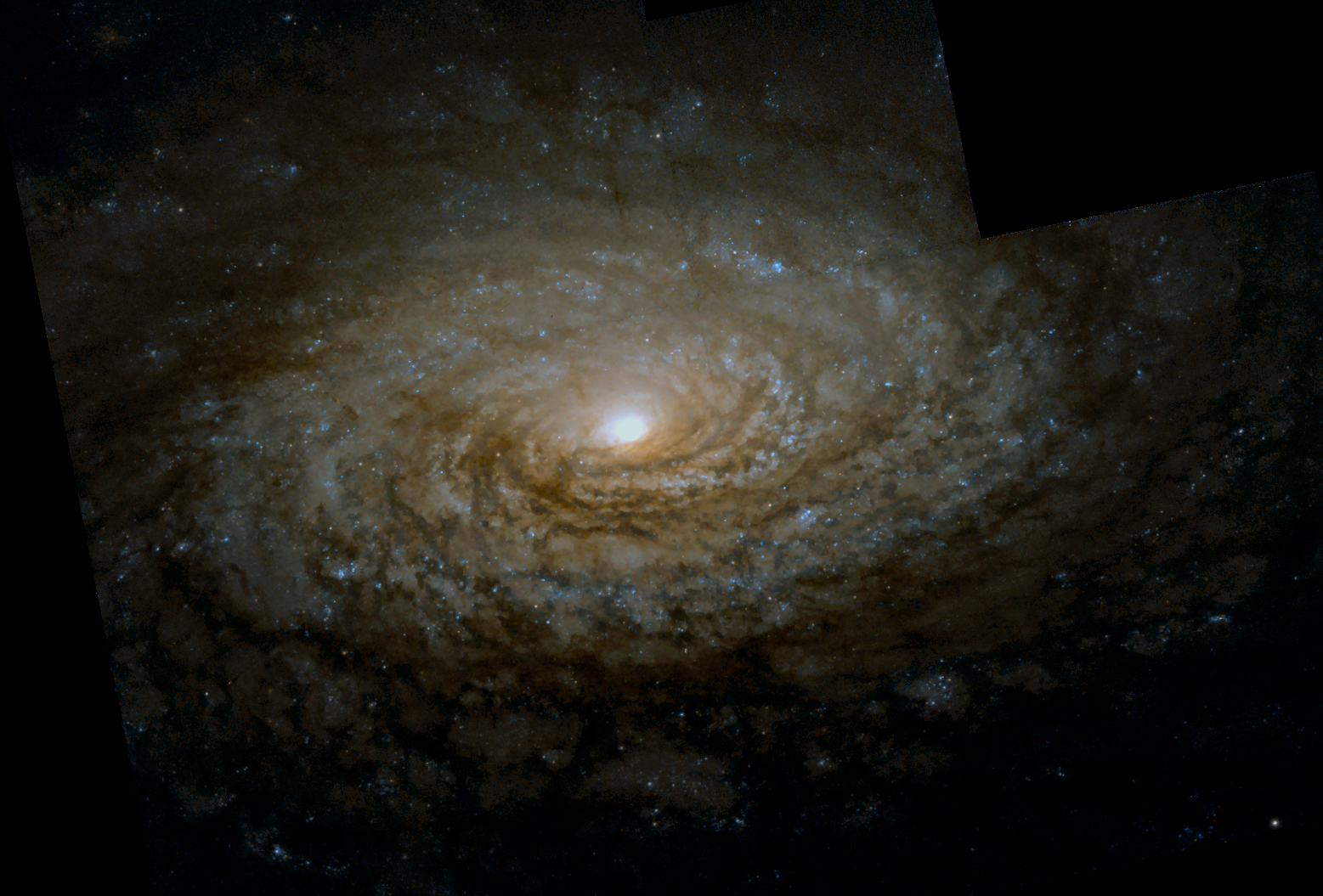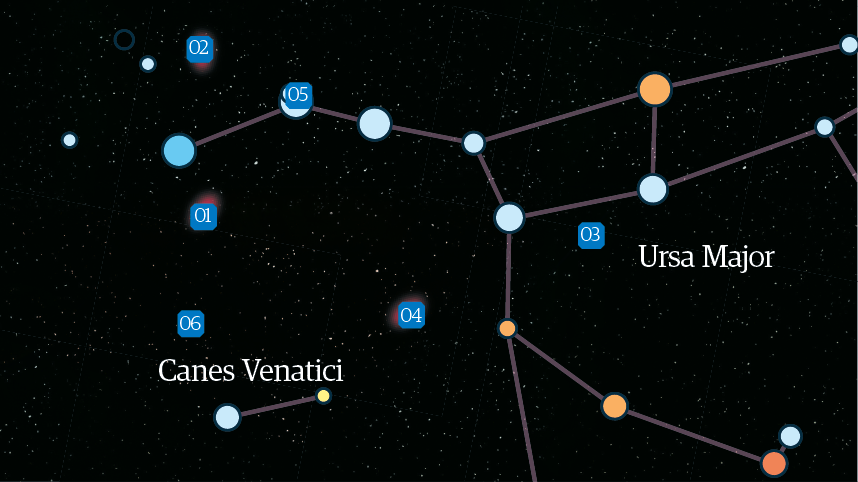Deep Sky Challenge: Seek the Hunting Dog and the Great Bear’s night-sky jewels
Spring has arrived, and with it a wealth of deep sky objects on which to turn your telescope

Sunflower Galaxy (Messier 63). Image credit: NASA/ESA/HLA/STScl/ST-ECF/CADC
For those of us in the Northern Hemisphere, high overhead on spring nights can be found the constellations of Canes Venatici (the Hunting Dogs) and Ursa Major (the Great Bear). Both contain several bright distant galaxies along with many fainter ones, as well as an interesting nebula. Possibly the most famous of all the double stars, which is in fact a multiple star system, lies in this region too. There are some well-known galaxies that will be relatively easy target for even small telescopes but many will require a larger aperture and dark skies to see well.

Image credit: NASA/ESA
1 – The Whirlpool Galaxy (Messier 51)
Use the tip of the Great Bear’s tail to find this interacting galaxy. You’ll need at least a small telescope to pick out a diffuse patch of light with a bright central region at its heart.
2 – Pinwheel Galaxy (Messier 101)
Scopes with an aperture of about three inches will reveal a nebulous haze with a bright centre, while an eight-inch instrument will show a bright, condensed core surrounded by nebulosity.
3 – The Owl Nebula (Messier 97)
This is a planetary nebula – a star, which has shed its outer shell of gas. Larger telescopes will show two dark patches that give this deep-sky object its appearance.
4 – Messier 106
Spiral galaxy Messier 106 can be picked up with binoculars, while small telescopes show a diffuse patch with a bright centre. An eight-inch instrument will reveal details of the structure.
5 – Mizar and Alcor
The widest of the naked-eye double stars. Through the field of view, the stellar duo twinkle as a pair of white-blue jewels, where Alcor is the faintest of the pairing at a magnitude of 4.
6 – Sunflower Galaxy (Messier 63)
One of the prettiest spiral galaxies in the night sky. A large telescope with medium power shows it well. With the right aperture, usually ten inches or more, you’ll can pick out the dust lanes.
Keep up to date with the latest reviews in All About Space – available every month for just £4.99. Alternatively you can subscribe here for a fraction of the price!




